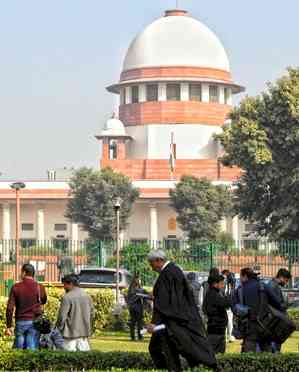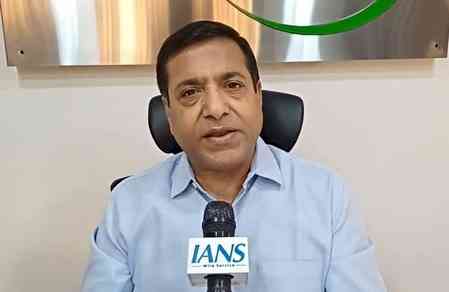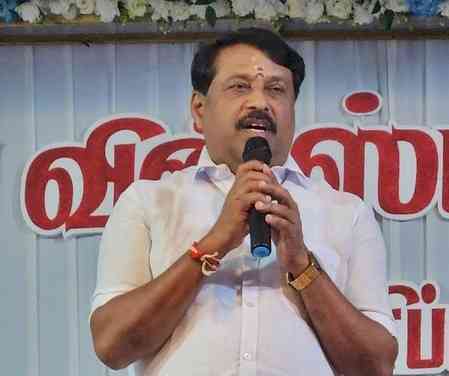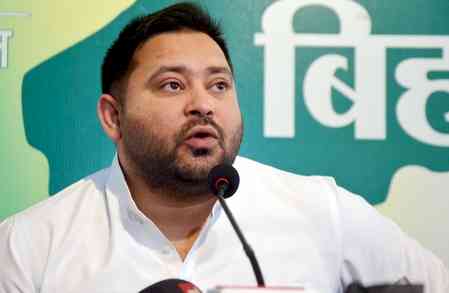Repeated and persistent doubts on EVMs can have contrarian impact of creating distrust: SC
Rejecting a batch of petitions seeking mandatory cross-verification of the votes cast with Voter-Verifiable Paper Audit Trail (VVPAT) slips, the Supreme Court on Friday said that raising repeated and persistent doubts on Electronic Voting Machines (EVMs), even without supporting evidence, can have the contrarian impact of creating distrust and can reduce citizen participation and confidence in elections.

New Delhi, April 26 (IANS) Rejecting a batch of petitions seeking mandatory cross-verification of the votes cast with Voter-Verifiable Paper Audit Trail (VVPAT) slips, the Supreme Court on Friday said that raising repeated and persistent doubts on Electronic Voting Machines (EVMs), even without supporting evidence, can have the contrarian impact of creating distrust and can reduce citizen participation and confidence in elections.
In his verdict, Justice Sanjiv Khanna said, “The suspicion that the EVMs can be configured or manipulated for repeated or wrong recording of vote(s) to favour a particular candidate should be rejected.”
“We acknowledge the right of voters to question the working of EVMs, which are but an electronic device that has a direct impact on election results. However, it is also necessary to exercise care and caution when we raise aspersions on the integrity of the electoral process.
“Repeated and persistent doubts and despair, even without supporting evidence, can have the contrarian impact of creating distrust. This can reduce citizen participation and confidence in elections, essential for a healthy and robust democracy.”
He added that the credibility of the Election Commission of India (ECI) and integrity of the electoral process earned over the years cannot be chaffed and over-ridden by baroque contemplations and speculation.
Further, Justice Khanna took note of the statement made by ECI officials that the symbol loading process – where a bitmap file of the serial number, name of the candidate and the symbol is uploaded – cannot be equated with the uploading of the software.
“The symbol loading process undertaken by using the symbol loading unit cannot alter or modify the programme/firmware in the VVPAT which has been burnt/loaded in the memory,” he said.
The apex court said that while it acknowledge the fundamental right of voters to ensure their vote is accurately recorded and counted, the same cannot be equated with the right to 100 per cent counting of VVPAT slips, or a right to physical access to the VVPAT slips, which the voter should be permitted to put in the drop box.
It added that giving physical access to VVPAT slips to voters is “problematic and impractical”, and will lead to misuse, malpractices and disputes.
Saying that the weakness of the ballot paper system is well-known and documented, it rejected the submission to return to the ballot paper system as “foible and unsound.”
“We would be undoing electoral reforms by directing reintroduction of the ballot papers. EVMs offer significant advantages. They have effectively eliminated booth capturing by restricting the rate of vote casting to four votes per minute, thereby prolonging the time needed and thus check insertion of bogus votes.
“EVMs have eliminated invalid votes, which were a major issue with paper ballots and had often sparked disputes during the counting process. Furthermore, EVMs reduce paper usage and alleviate logistical challenges.
“Finally, they provide administrative convenience by expediting the counting process and minimising errors,” the SC said.
Association for Democratic Reforms, one of the petitioners, sought directions to return to the paper ballot system, or that the VVPAT slip be given to the voter to verify and put in the ballot box for counting, and/or there should be 100 per cent counting of the VVPAT slips in addition to electronic counting by the control unit.
The PIL litigants contended that there exists a possibility of manipulating the EVMs and, therefore, the apex court should step in to instill confidence in the voters as they have the right to know that their franchise has been correctly recorded and counted.
Justice Dipankar Datta – who authored a separate opinion, but “whole-heartedly” concurred with Justice Khanna’s verdict – said that the prayer to revert to the “paper ballot system” reveals the real intention of the petitioning association to discredit the system of voting through the EVMs and thereby derail the electoral process that is underway, by creating unnecessary doubts in the minds of the electorate.
“I have serious doubts as regards the bona fides of the petitioning association when it seeks a reversion to the old order. Irrespective of the fact that in the past efforts of the petitioning association in bringing about electoral reforms have borne fruit, the suggestion put forth appeared inexplicable,” Justice Datta said.
Further, he said that in recent years, a trend has been fast developing of certain vested interest groups endeavouring to undermine the achievements and accomplishments of the nation, earned through the hard work and dedication of its sincere workforce, adding that “there seems to be a concerted effort to discredit, diminish, and weaken the progress of this great nation on every possible frontier.”
In conclusion, Justice Datta said that the petitioners’ apprehensions were misplaced and they have neither been able to demonstrate how the use of EVMs in elections violates the principle of free and fair elections nor have they been able to establish a fundamental right to 100 per cent VVPAT slips tallying with the votes cast.
In April 2019, the Supreme Court ordered the ECI to increase the VVPAT slips from one EVM per Assembly constituency to five.
It had issued guidelines for mandatory verification of VVPAT slips, out of five randomly-selected polling stations, after completing the final round of counting votes recorded in EVMs.
The latest verdict declined to modify the aforesaid directions to increase the number of VVPAT undergoing slip counting for several reasons.
“First, it will increase the time for counting and delay the declaration of results. The manpower required would have to be doubled. Manual counting is prone to human errors and may lead to deliberate mischief. Manual intervention in counting can also create multiple charges of manipulation of results. Further, the data and the results do not indicate any need to increase the number of VVPAT units subjected to manual counting,” the apex court reasoned.
Justice Khanna passed two directions not because the top court had any doubt, but to only further strengthen the integrity of the election process.
First, all Symbol Loading Units (SLUs) will be sealed on or after May 1 on completion of the symbol loading process and will be kept in the strong room at least for 45 days post declaration of results.
“The candidates or representatives shall sign the seal. The containers containing SLUs shall be kept in strong rooms, along with EVMs, at least for a period of 45 days post declaration of results. They shall be opened, examined and dealt with as in the case of EVMs,” the apex court said.
Second, the burnt memory or microcontroller in 5 per cent of the EVMs per Assembly segment of a parliamentary constituency will be checked and verified by a team of engineers from EVM manufacturers post announcement of results on a written request made by candidates securing second and third-highest votes.
“All candidates or their representatives shall have the option to remain present at the time of verification. Such a request should be made within a period of seven days from the date of the declaration of results…The actual cost or expenses for the said verification will be notified by the ECI and the candidates making the said request will make payment of said expenses. Expenses will be refunded in case EVM is found to be tampered,” ordered the Supreme Court.
It said that the district Election Officer in consultation with the team of engineers will certify the authenticity and intactness of the burnt memory or the microcontroller.
--IANS
pds/rad


 IANS
IANS 








